

2007
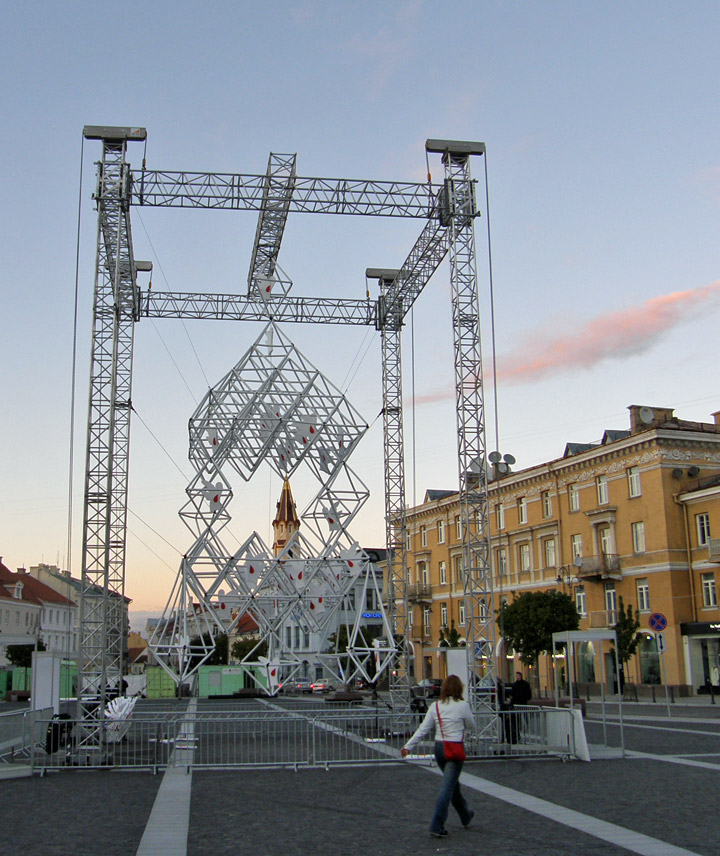
Vilnius
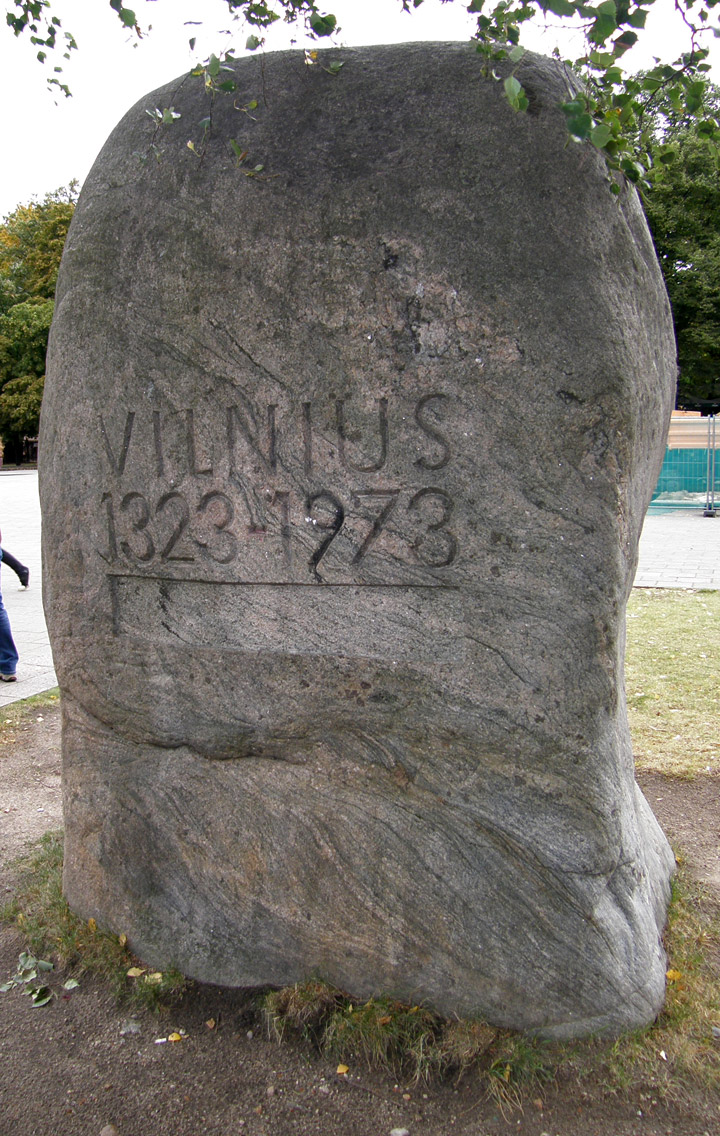
1323 - 1973 marker
Vilnius is the largest city and the capital of Lithuania, with a population of 553,904 (850,700 together with Vilnius County) as of December 2005. It is the seat of the Vilnius city municipality and of the Vilnius district municipality. It is also the capital of Vilnius County.
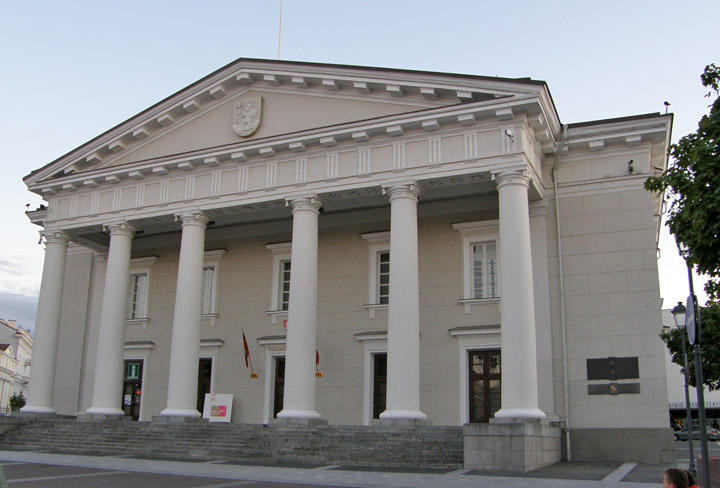
As a multicultural city, Vilnius has also been known by many names in different
languages during its history. The city is known in Polish as Wilno, in Latin as
Vilna, in Belarusian as Вiльня (Vilnia), in German as Wilna, in Yiddish as וילנאָ
(Vilna), and in Latvian as Viļņa. An older Russian name is Вильна/Вильно (Vilna/Vilno),
although Вильнюс (Vil'njus) is now more commonly used. The names Wilno and Vilna
have also been used in older English and French language publications.
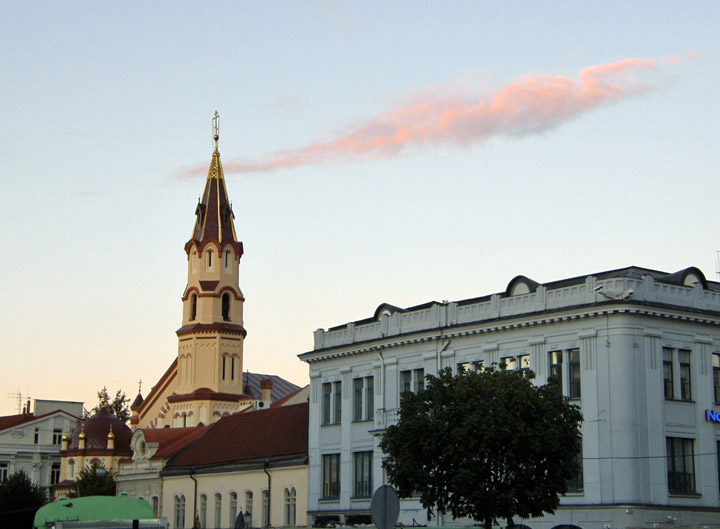
"Legend has it that the Grand Duke of Lithuania, Gediminas, was hunting in the
sacred forest near the Valley of Šventaragis. Tired after the successful day's
hunt, the Grand Duke settled in nearby for the night. He fell soundly asleep and
began to dream. A huge Iron Wolf was standing on top a hill and the sound of
hundreds of other wolves inside it filled all of the surrounding fields and
woods. Upon awakening, the Duke asked the pagan priest Lizdeika to interpret the
meaning of the dream. And the priest told him: "What is destined for the ruler
and the State of Lithuania, is thus: the Iron Wolf represents a castle and a
city which will be established by you on this site. This city will be the
capital of the Lithuanian lands and the dwelling of their rulers, and the glory
of their deeds shall echo throughout the world"
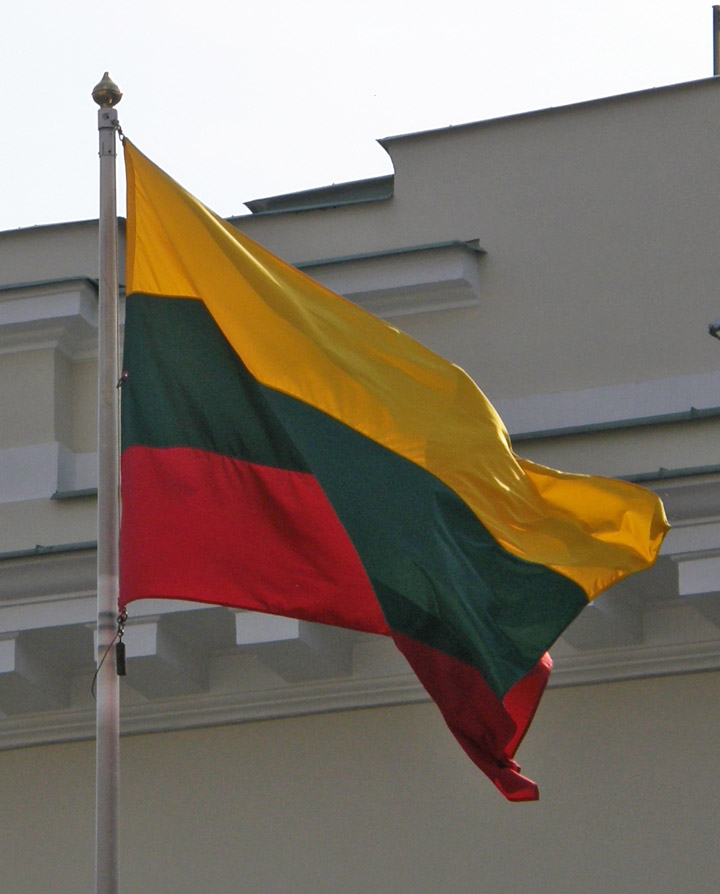
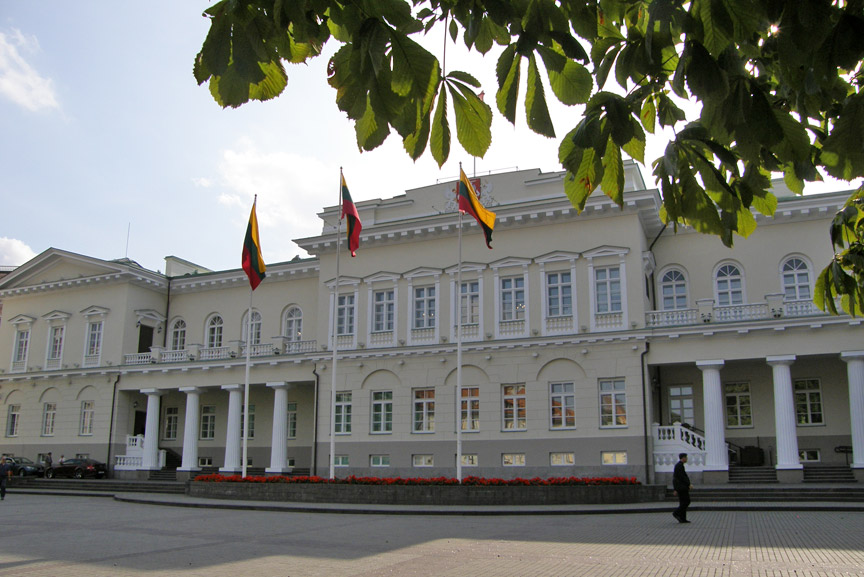
Presidential Palace
Some historians identify the city with Voruta, a legendary capital of Mindaugas who was crowned in 1253 as King of Lithuania. The city was first mentioned in written sources in 1323, in letters of Grand Duke Gediminas that were sent to German cities and invited Germans and members of the Jewish community to settle in the capital city. In 1387, the city was granted city rights by Jogaila, one of Gediminas' successors.
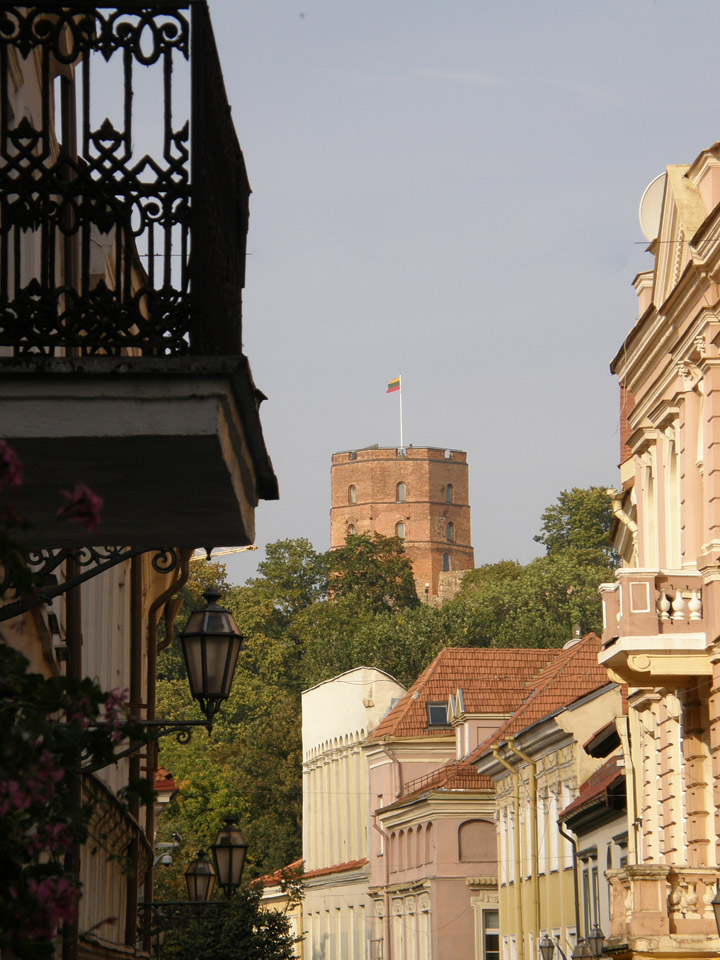
Gedimino Tower
Between 1503 and 1522 the city was surrounded with walls that had nine city gates and three towers. Vilnius reached the peak of its development under the reign of Sigismund August, who moved his court there in 1544. In the following centuries, Vilnius became a constantly growing and developing city. This growth was due in part to the establishment of Almae Academia et Universitas Vilnensis Societatis Jesu by the King Stephen Bathory in 1579. The university soon developed into one of the most important scientific and cultural centres of the region and the most notable scientific centre of the Polish-Lithuanian Commonwealth. Political, economic, and social activities were in full swing in the town. In 1769, the Rasos Cemetery, one of the oldest surviving cemeteries in the city, was founded. During its rapid development, the city was open to migrants from both abroad and far reaches of territories of Grand Duchy of Lithuania. Each group made its unique contribution to the life of the city, and crafts, trade and science prospered. During the Russo-Polish War (1654-1667), Vilnius was occupied by Russia for several years. The city was pillaged and burned, and its population was massacred. The city's growth lost its momentum for many years, but the population rebounded, and by the beginning of the 19th century city's population reached 20,000 making the city one of the largest in Northern Europe.
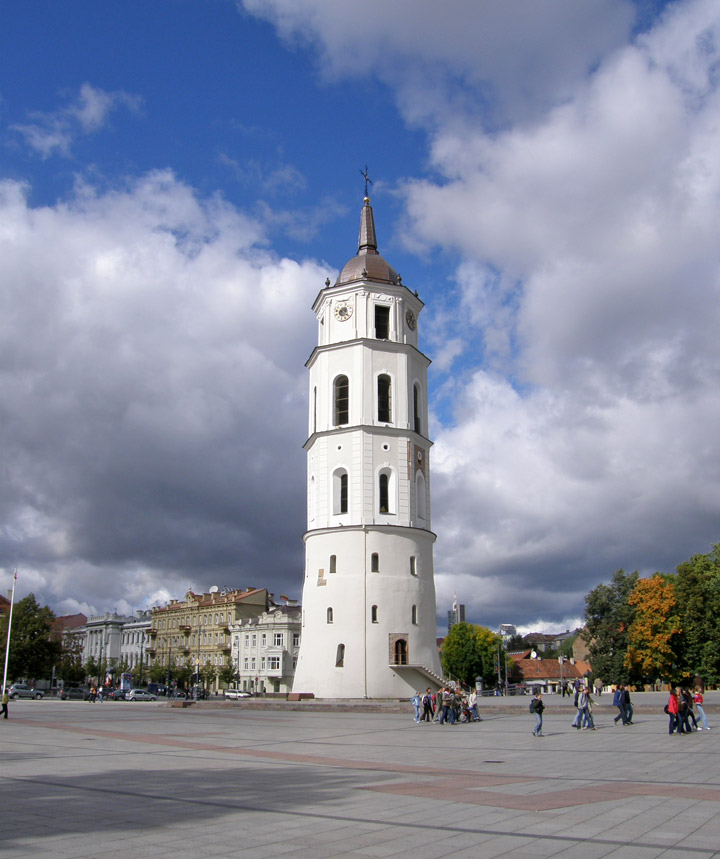
Cathedral Bell Tower
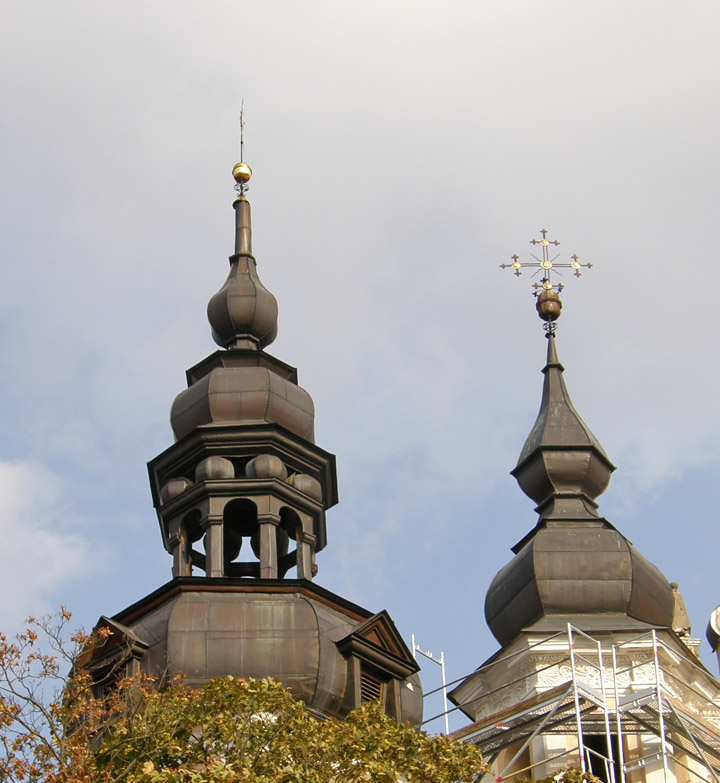
Saint Michael's church
After the Third Partition of the Polish-Lithuanian Commonwealth in 1795, Vilnius
was annexed by Russia and became the capital of a Vilna Governorate. During the
Russian occupation the city walls were destroyed, and by 1805, only the Dawn
Gate remained. In 1812, the city was seized by Napoleon on his push towards
Moscow. Following the November Uprising in 1831, Vilnius University was closed
and Russian repressions halted the further development of the city. During the
January Uprising in 1863 heavy fighting occurred within the city, but was
brutally pacified by Mikhail Muravyov, nicknamed The Hangman by the population
because of the number of executions he organized. After the uprising all civil
liberties were withdrawn, and use of the Polish and Lithuanian languages was
banned. Ethnic Lithuanians constituted only a small minority of citys
population, Poles, Jews and Russians made up a majority of the population of the
city.
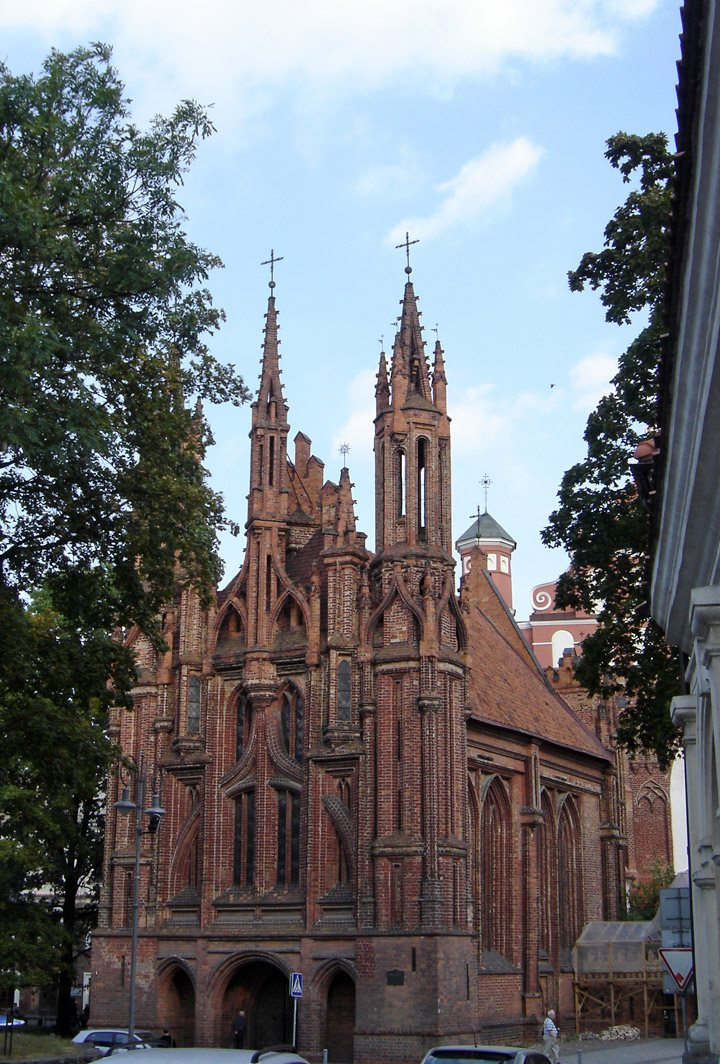
St. Anne's Church and the church of the Bernardine Monastery in Vilnius
More Photos of St. Anne's church
During World War I, Vilnius — as with the rest of Lithuania — was occupied by
the German Empire from 1915 until 1918. The Act of the Restoration of
Independence of Lithuania was proclaimed in the city on February 16, 1918. After
the withdrawal of German forces, Lithuanian forces were made to retreat by the
advancing Russian occupation forces. Vilnius changed hands many times: for a
while it was controlled by Polish self-defence units, who didn't want the city
to be occupied by Russian-Bolshevik forces. Then the Polish Army regained
control, then Soviet forces again. Shortly after its defeat in the Battle of
Warsaw (1920), the retreating Red Army ceded the city back to Lithuania by
signing a peace treaty on July 12, 1920. Poland also recognized Vilnius and the
Vilnius region as a part of Lithuania with the Treaty of Suwalki signed on
October 7, 1920. However, on October 9 of the same year, the Polish Army under
General Lucjan Żeligowski broke the treaty and seized Vilnius after a staged
coup. The city and its surroundings were proclaimed the separate puppet state of
Central Lithuania. On February 20, 1922, the whole area was annexed to Poland,
with Vilnius as the capital of the Wilno Voivodship (Wilno being the name of
Vilnius in Polish). The predominant languages of the city were still Polish and,
to the lesser extent, Yiddish.
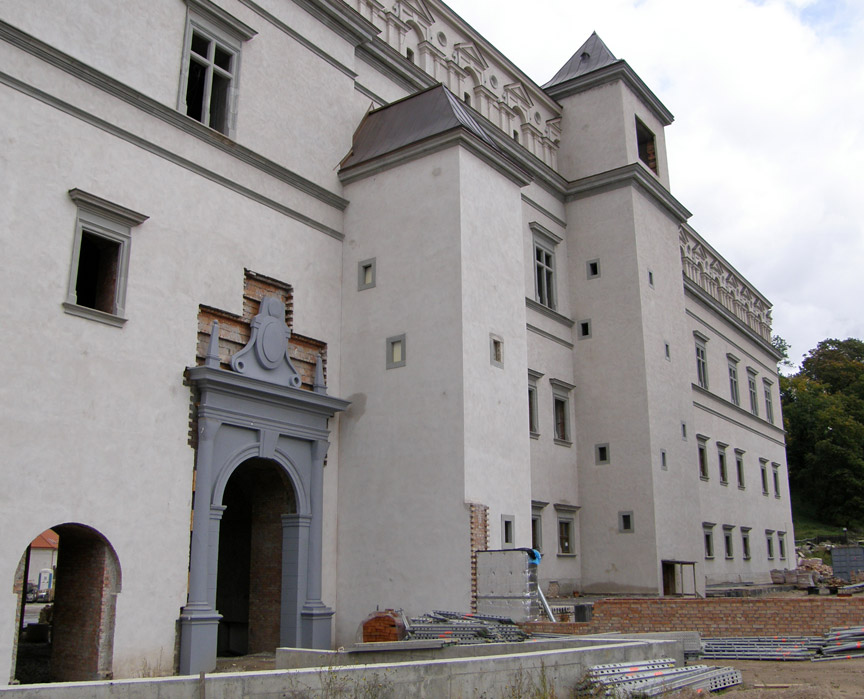
former Royal Palace
(now being restored)
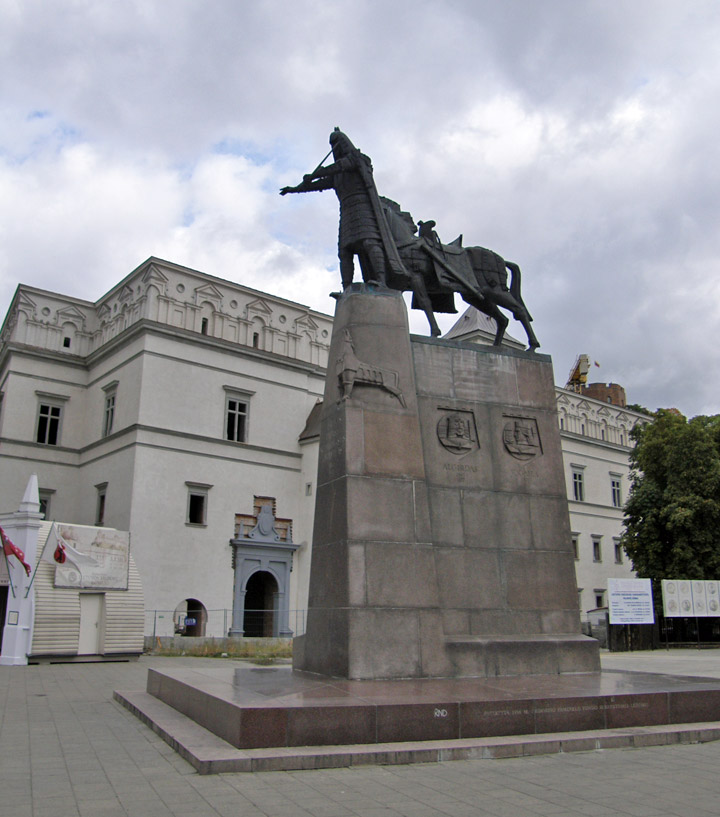

booth to tell about the Royal
Palace
and to collect money for its restoration
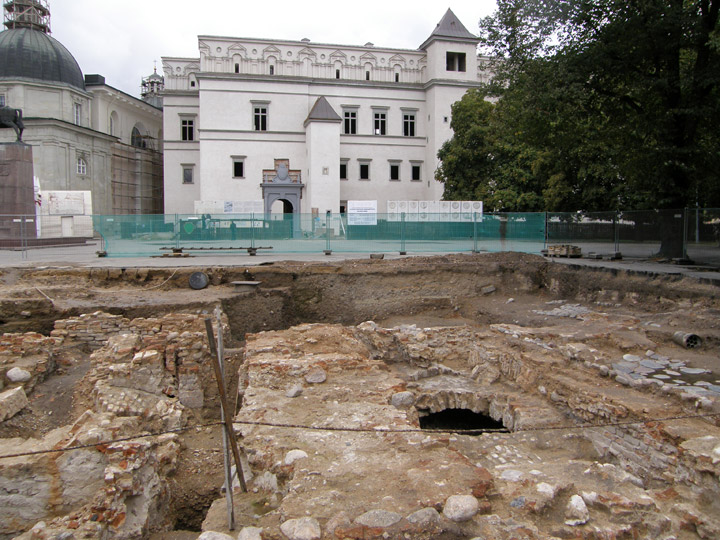
archeological diggings on the site of the former castle
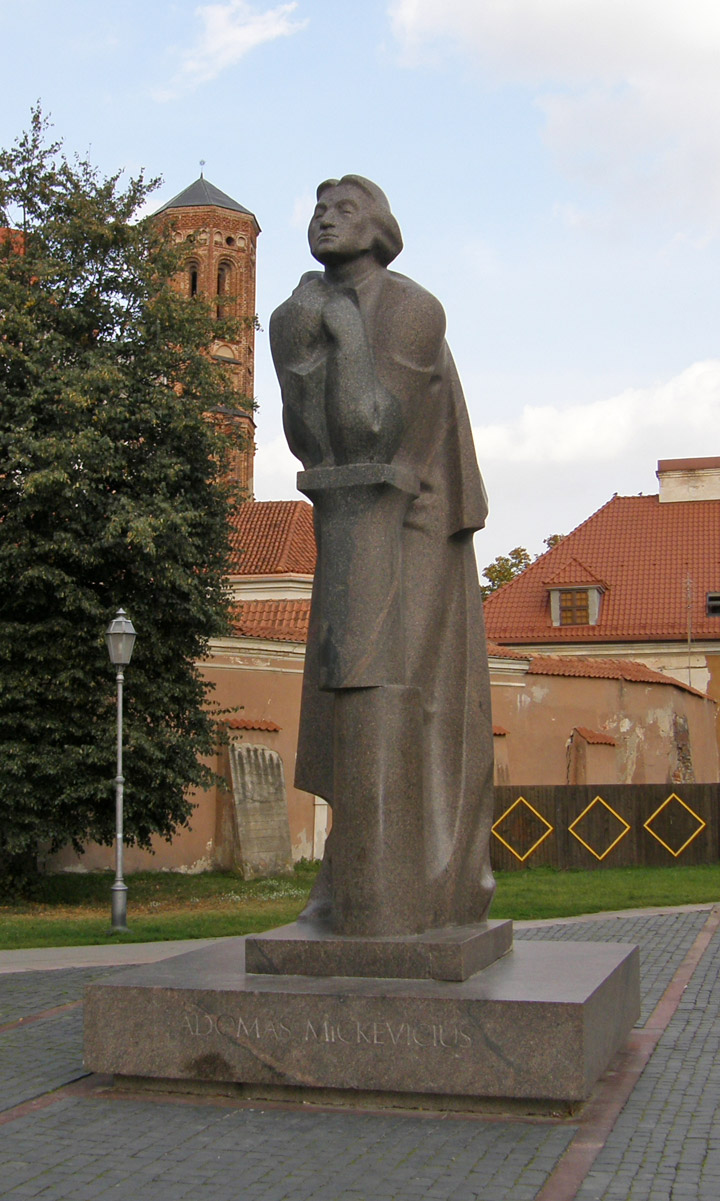
monument of Adam Mickiewicz
Adomas Bernardas Mickevičius; December 24, 1798 – November 26, 1855, is one of the best-known Polish poets and writers, considered the greatest Polish Romantic poet of the 19th century, alongside Zygmunt Krasiński, Juliusz Słowacki (the Three Bards) and Cyprian Kamil Norwid.
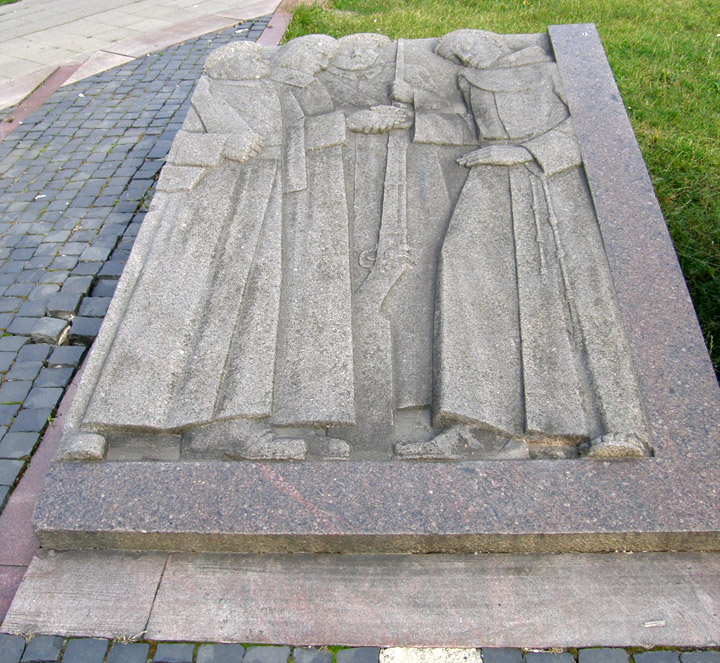
Mickiewicz was born at the estate of his uncle in Zaosie near Navahrudak (Polish: Nowogródek, Belarusian: Навагрудак, Lithuanian: Naugardukas, Russian: Новогрудок) of the Russian Empire (formerly in Polish-Lithuanian Commonwealth, now in Belarus). His father, Mikołaj Mickiewicz, belonged to the szlachta (Polish-Lithuanian Commonwealth nobility, coat of arms Poraj). The poet was educated at the University of Vilnius. There he got involved with a secret Polish-Lithuanian freedom organization. Following his studies he worked as a tutor in a regional school in Kaunas in 1819-1823.
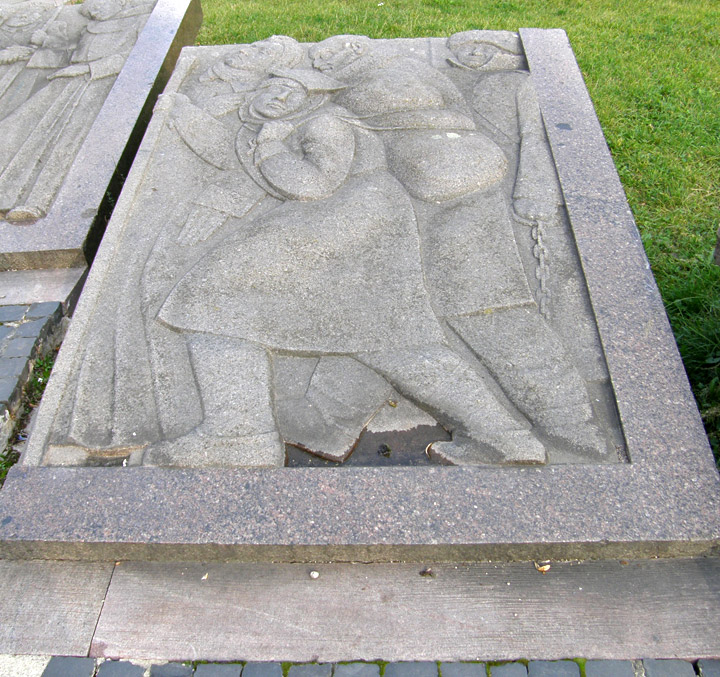
In 1823 Mickiewicz was arrested and put under investigation for his political activities (membership in Filomaci). Subsequently he was banished to live in central Russia. He had already published two small volumes of miscellaneous poetry at Vilnius, which had been favorably received by the Slavic public, and on his arrival at St. Petersburg found himself welcomed into the leading literary circles, where he became a great favorite both for his agreeable manners and his extraordinary talent of improvisation. In 1825 he visited the Crimea, which inspired a collection of sonnets (Sonety Krymskie — The Crimean Sonnets) with their admirably elegant rhythm and rich Oriental coloring. The most beautiful are "The Storm," "Bakhchisaray," and "The Grave of Countess Potocka". Crimea caught the eye of another famous contemporary poet, Alexander Pushkin, who wrote about it in "The Fountain of Bakhchisarai" two years before Mickiewicz.
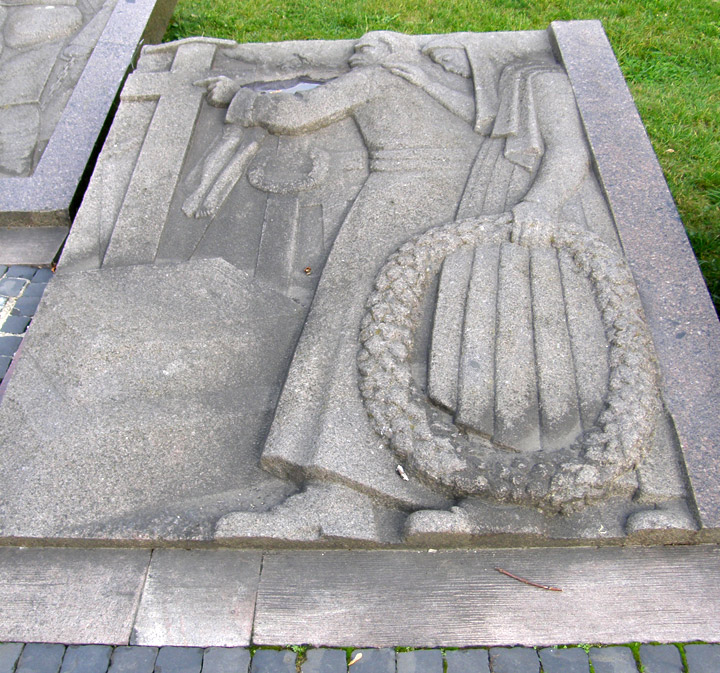
In 1828 appeared his Konrad Wallenrod, a narrative poem describing the battles of the Teutonic Knights with the heathen Lithuanians. In it, under a thin veil, Mickiewicz represented the sanguinary passages of arms and burning hatred which had characterized the long feuds of the Russians and Poles. The objects of the poem, though obvious to many, escaped the Russian censors, and the poem was allowed to be published, complete with the telling motto, adapted from Machiavelli: "Dovete adunque sapere come sono duo generazioni da combattere - bisogna essere volpe e leone" — "Ye shall know that there are two ways of fighting - you must be a fox and a lion." This striking long poem contains at least two revered subsections including Alpuhara Ballad.

After a five year exile in Russia the poet obtained the permit to travel; he had secretly made up his mind never to return to that country, or to his native land so long as it remained under the government of Imperial Russia. Wending his way to Weimar, he there made the acquaintance of Goethe, who received him cordially, and, pursuing his journey through Germany, he entered Italy by the Splügen Pass, visited Milan, Venice and Florence, and finally established his residence in Rome. There he wrote the third part of his poem, Dziady (Forefathers Eve, lit. Vėlinės), the subject of which is the religious commemoration of their ancestors practiced among Slavic and Baltic peoples, and Pan Tadeusz, his longest poem, considered as his masterpiece. A graphic picture is drawn of Lithuania on the eve of Napoleon's expedition to Russia in 1812. In this village idyll, as Aleksander Brückner calls it, Mickiewicz gives a picture of the homes of the Commonwealth magnates, with their somewhat boisterous but very genuine hospitality. They are seen just as the knell of their nationalism, as Brückner says, seemed to be sounding, and therefore there is something melancholy and dirge-like in the poem in spite of the pretty love story which forms the main incident.
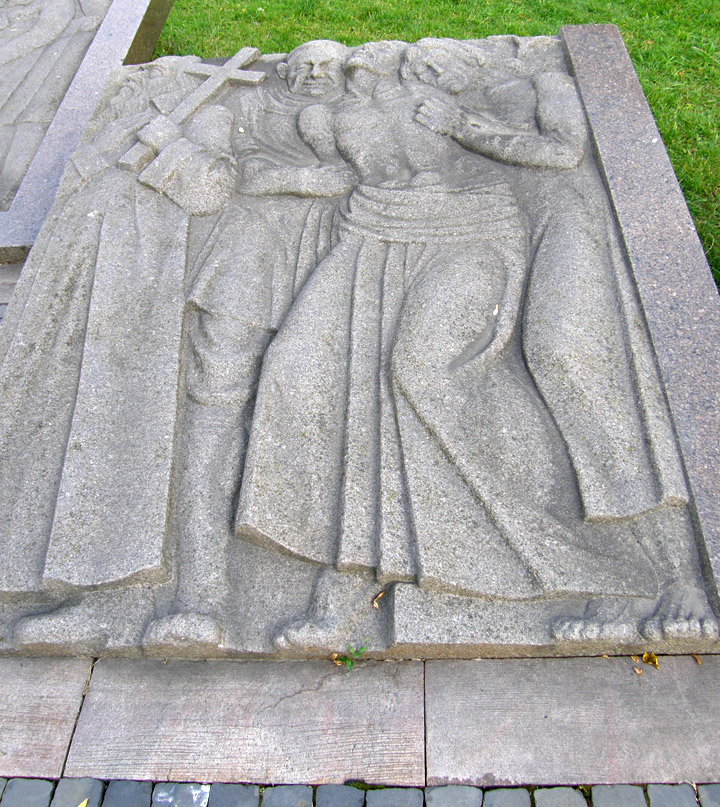
Mickiewicz turned to Lithuania,
firmly stating it as his "Fatherland" — in so doing, he was actually referring
to his native former Grand Duchy of Lithuania — with the loving eyes of an
exile, and gives some of the most delightful descriptions of "Lithuanian" skies
and "Lithuanian" forests. He describes the weird sounds to be heard in the
primeval woods in a country where the trees were sacred. The cloud-pictures are
equally striking.
In 1832 Mickiewicz left Rome for Paris, where his life was for some time spent
in poverty and unhappiness. He had married a Polish lady, Celina Szymanowska
(her parents came from Jewish Frankist families), who became insane. In 1840 he
was appointed to the newly founded chair of Slavic languages and literature in
the College de France, a post which he was especially qualified to fill, as he
was now the chief representative of Slavic literature, Alexander Pushkin having
died in 1837. He was, however, only destined to hold it for a little more than
three years, his last lecture having been given on May 28, 1844. His mind had
become more and more disordered under the influence of religious mysticism.
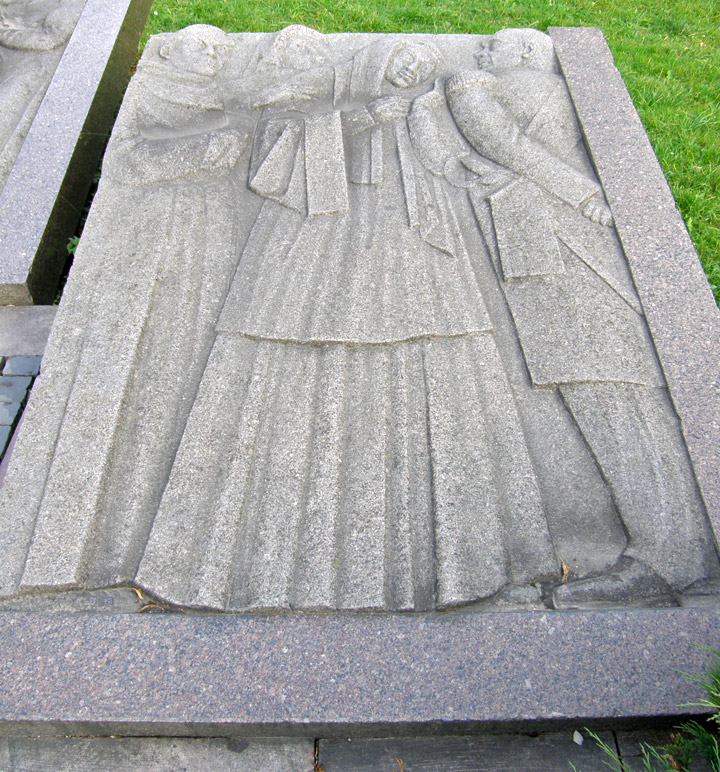
He had fallen under the influence of
a strange mystical philosopher Andrzej Towiański. His lectures became a medley
of religion and politics, and thus brought him under the censure of the
government. A selection of them has been published in four volumes. They contain
some good sound criticism, but the philological part is defective, for
Mickiewicz was no scholar, and it is clear that he is only well-acquainted with
two of the literatures, Polish and Russian, and the latter only till the year
1830. A very sad picture of his declining days is given in the memoirs of Herzen.
At a comparatively early period the unfortunate poet exhibited all the signs of
premature old age; poverty, despair and domestic affliction had wrought their
work upon him. In 1849 he founded a French newspaper, La Tribune des Peuples
(Peoples' Trubune), but it only existed a year. The restoration of the French
Empire seemed to kindle his hopes afresh; his last composition is said to have
been a Latin ode in honour of Napoleon III. On the outbreak of the Crimean War
(1855) he went to Turkey to organise Polish forces to be used in the war against
Russia. With his friend, Armand Levy, a Romanian Jew, he set about organizing a
Jewish Legion, the Hussars of Israel, composed of Russian and Palestinian Jews.
During a visit to a military camp near Constantinople he caught cholera and died
suddenly in 1855. His body was removed to France and buried at Montmorency. In
1900 his remains were disinterred and buried in the cathedral of Kraków, where
rest, besides many of the kings, the greatest of Poland's worthies.
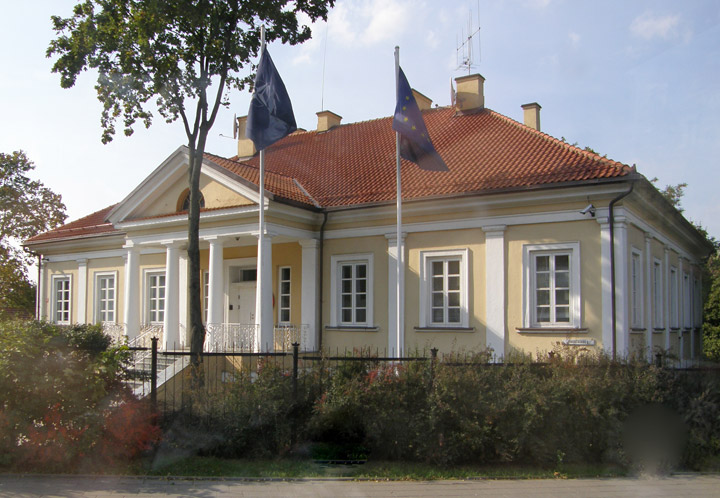
In the meantime, for yet another time in its history, the city enjoyed a period
of fast development. Vilnius University was reopened under the name Stefan
Batory University and the city's infrastructure was improved significantly. By
1931, the city had 195,000 inhabitants, making it the fifth largest city in
Poland with vibrant industries, such as Elektrit, a factory of the popular radio
receivers. Some Lithuanians, however, dispute this picture of economic growth
and point out that the standard of living in Vilnius at that time was
considerably lower compared to that in other parts of contemporary Lithuania.
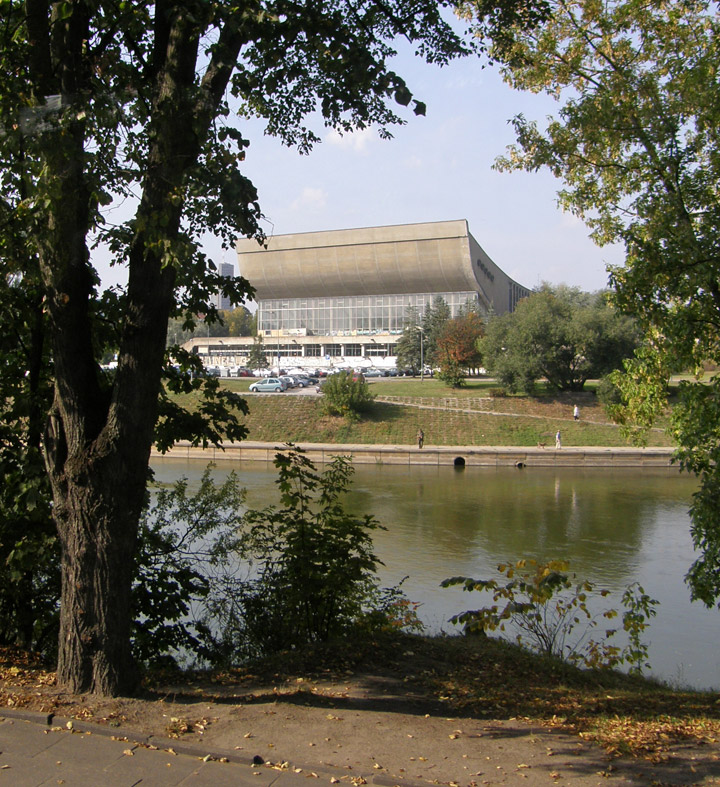
Following the secret protocol of the Molotov-Ribbentrop Pact, on September 19,
1939, Vilnius was seized and annexed by the Soviet Union. There were plans to
include the city and the region as a part of the Belarusian SSR, but eventually
it was decided that Vilnius might be used as a way to exert significant
influence on Lithuania. On October 10, 1939, after a Soviet ultimatum, the
Lithuanian government accepted the presence of Soviet military bases in various
parts of the country in exchange for restoring the city to Lithuania. On October
28, 1939 the Red Army withdrew from the city to its suburbs (to Nowa Wilejka)
and Vilnius has been taken over by the Lithuanian Army. A ceremonious defile
took place on October 29, 1939 through the city center. Though the process of
transferring the capital from Kaunas to Vilnius started soon after, the whole of
Lithuania was occupied by the Soviet Union in June of 1940, before the transfer
was completed. A new Communist government was installed, with Vilnius as the
capital of the newly created Lithuanian SSR. Up to 40,000 of the city's
inhabitants were arrested by the NKVD and sent to gulags in the far eastern
areas of the Soviet Union. The Soviets devastated city industries moving the
whole Elektrit radio factory with a part of its labor force to Minsk at Belarus
where it was renamed to Vyacheslav Molotov Radio Factory, after Stalin's
Minister of Foreign Affairs.
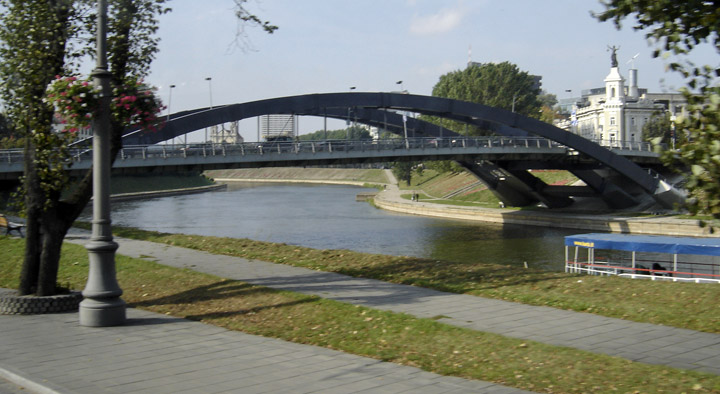
In June 1941, the city was seized by Germany. Two ghettos were set up in the old
town center for the large Jewish population - the smaller one of which was
"liquidated" by October. The larger ghetto lasted until 1943, though its
population was regularly decimated in what were known as "Aktionen". A failed
ghetto uprising on September 1, 1943 organized by the Fareinigte Partizaner
Organizacje (the United Partisan Organization, the first Jewish partisan unit in
Nazi-occupied Europe), was followed by the final destruction of the ghetto.
About 95% of the 265,000-strong Jewish population of Lithuania was murdered by
the German units and their local collaborators, many of them in Paneriai, about
10 km west of the old town centre.
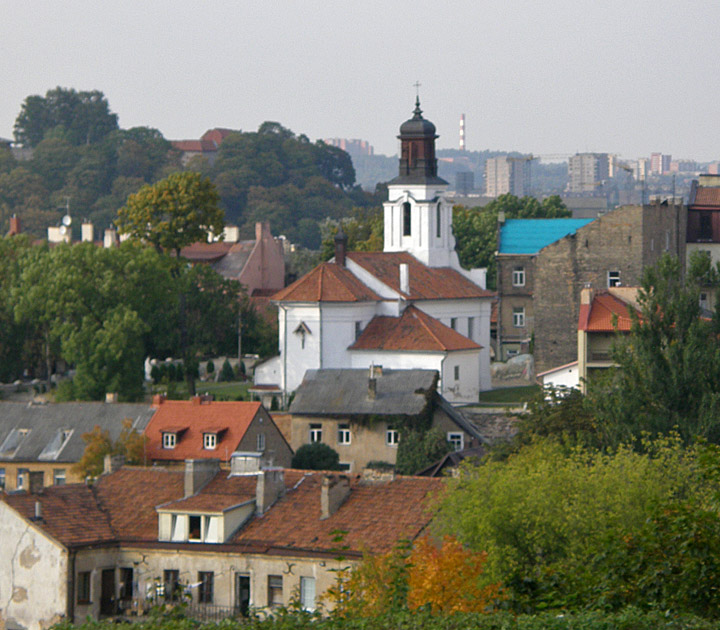
More Photos of Old Town Vilnius
In July 1944 Vilnius was retaken by the Soviet Army and the Home Army (see Wilno
Uprising). The NKVD arrested the Polish soldiers. Vilnius was incorporated into
the Soviet Union as the capital of the Lithuanian SSR shortly thereafter.
Immediately after World War II, large numbers of Poles were expelled from
Soviet-occupied Lithuania to Poland. Coupled with the migration of the
Lithuanians into Vilnius, this development resulted in a change in the city's
demographic fabric.
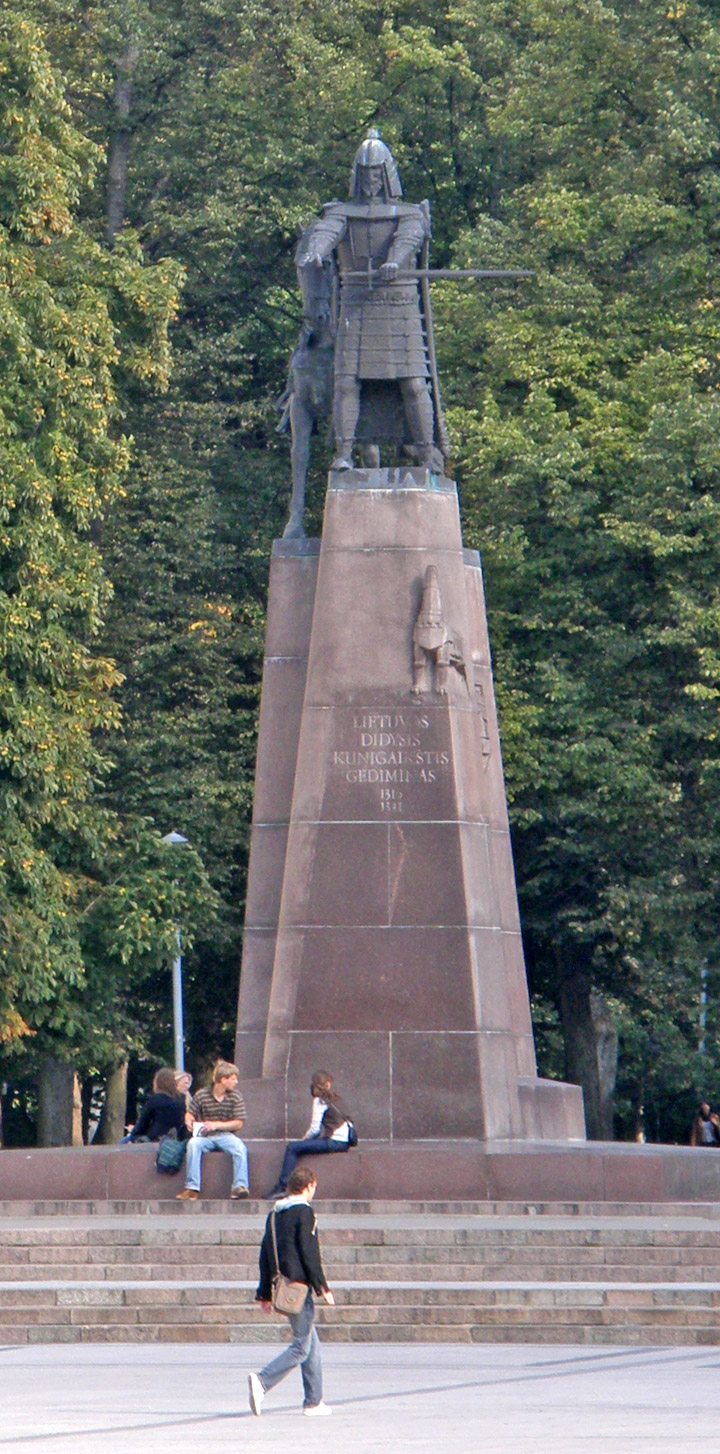
Grand Duke Gediminas
On March 11, 1990, the Supreme Council of the Lithuanian SSR announced its independence from the Soviet Union and restored the independent Republic of Lithuania. The Soviets responded on January 9, 1991, by sending in troops. On January 13 during the Soviet Army attack on the State Radio and Television Building and the Vilnius TV Tower, fourteen civilians were killed and more than 700 were seriously injured. The Soviet Union finally recognized Lithuanian independence in August 1991.
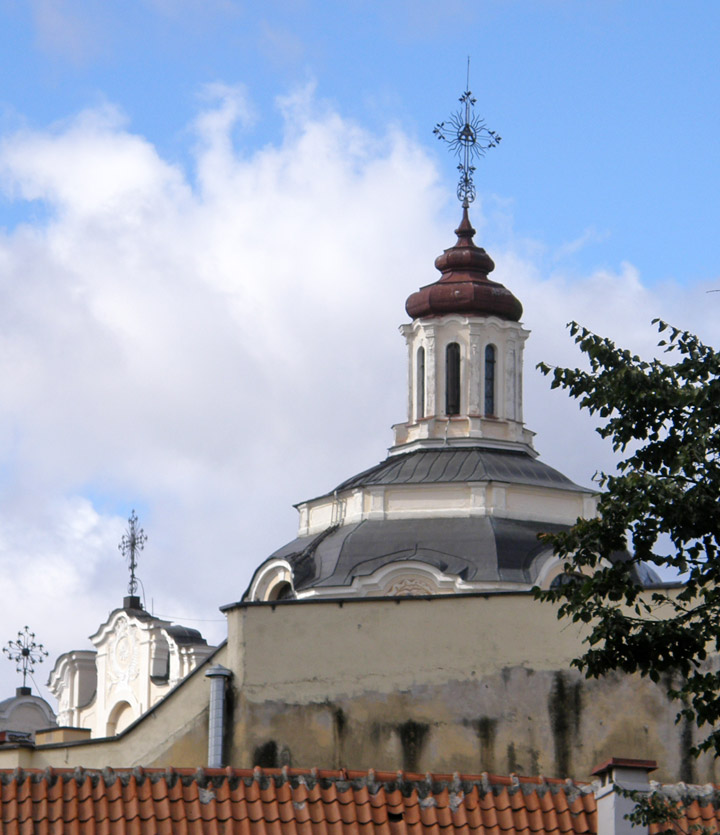
Since then, Vilnius has rapidly transformed in an attempt to erase its Soviet
past and the town has emerged as a modern European city. Many of its older
buildings have been renovated, and a business and commercial area is being
developed into the New City Center, expected to become the city's main
administrative and business district on the north side of Neris river. This area
includes modern residential and retail space, with the municipality building and
a 129-metre (423') Europa Tower as its most prominent building. While a number
of modern business and retail centers have been built during recent years, many
other projects are waiting to be implemented.
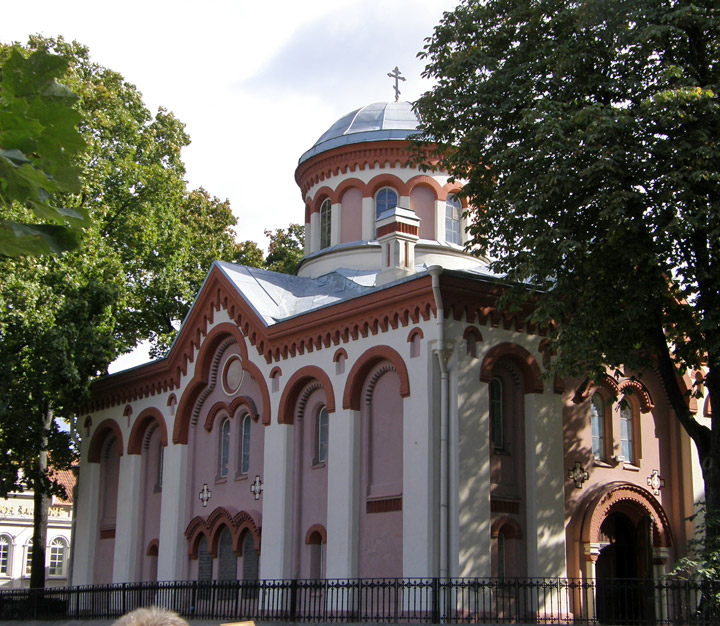
In 2009 Vilnius, capital of Lithuania, will be the capital of European Culture.
Among the initiatives promoted by Lithuania for this event, the historical
centre of the city has been restored and its main monuments have been renewed
Text from Wikipedia
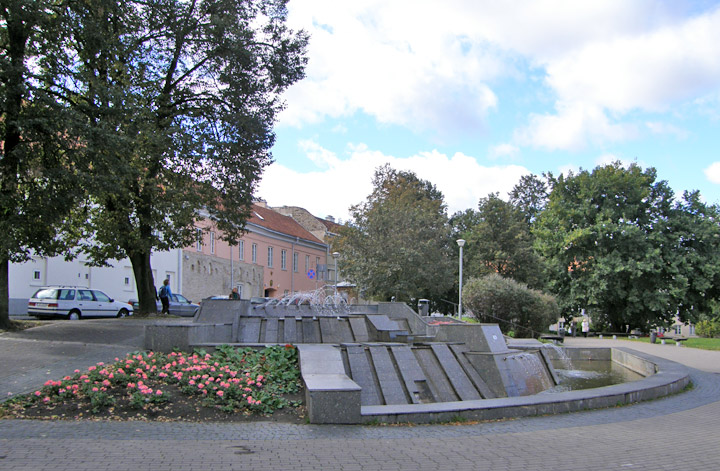
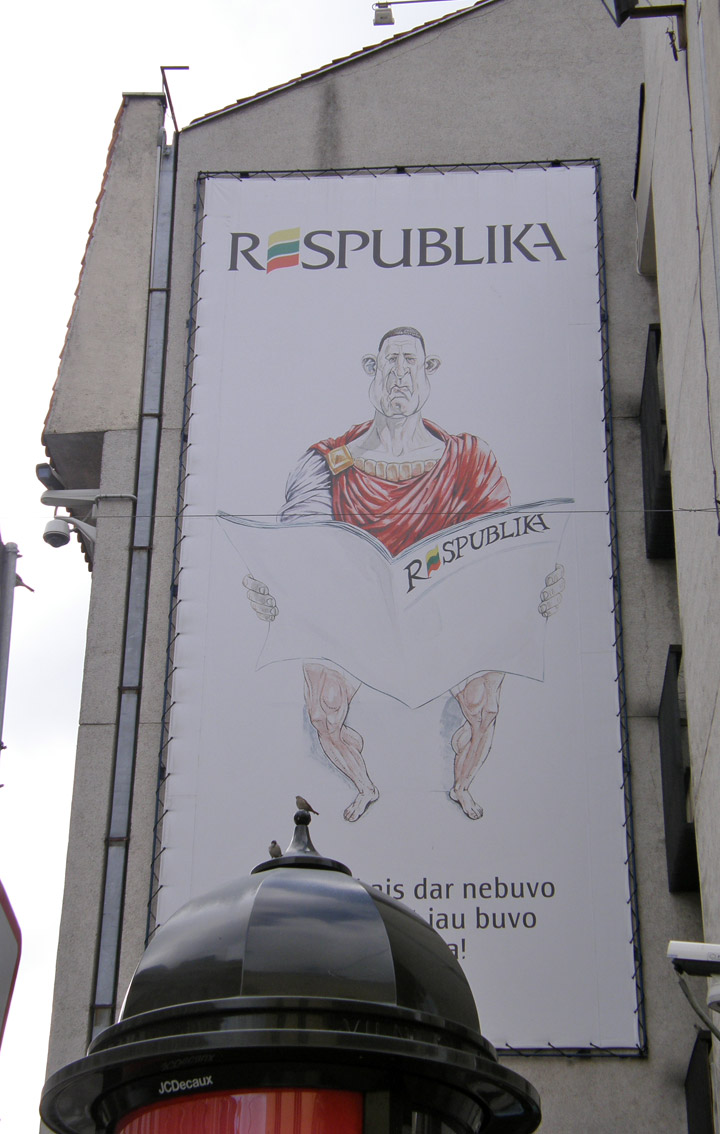
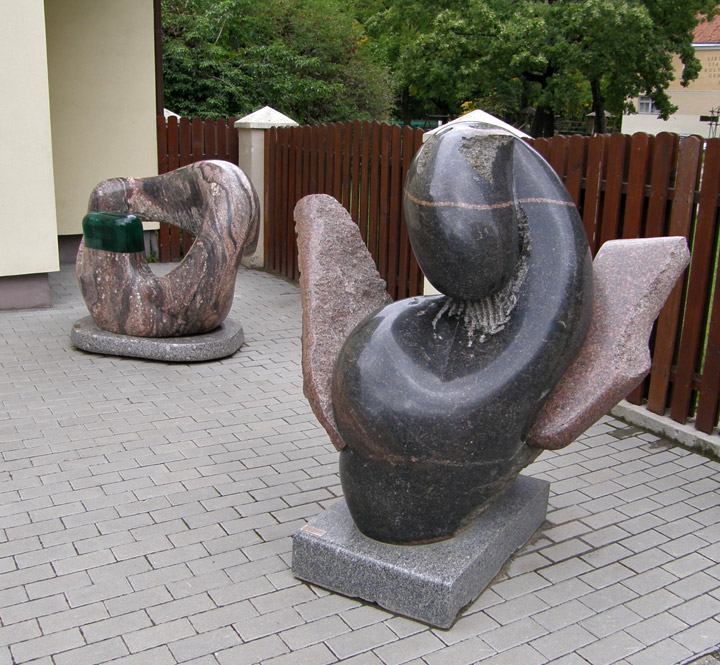

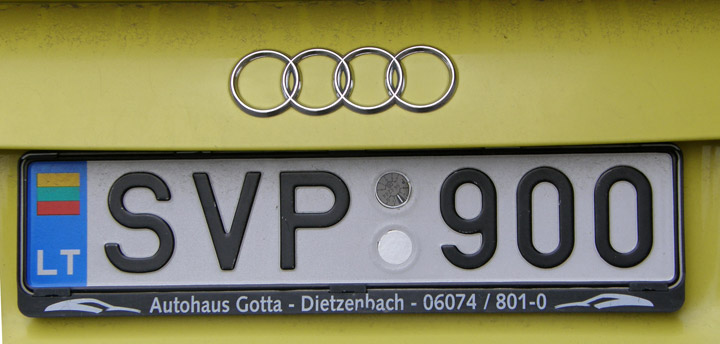
An Audi from Germany registered in Lithuania